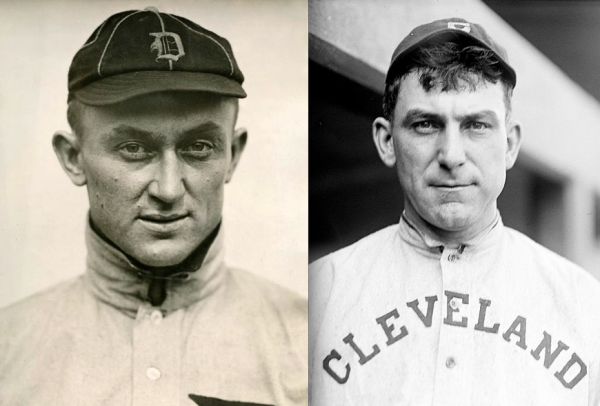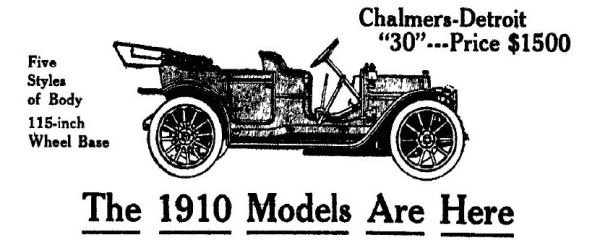by Eddie Deezen
Ty Cobb and Napoleon Lajoie
The
1910 American League batting race would be classified as,
unequivocally, the most bizarre in the history of baseball. The race was
a two-man battle between two baseball dichotomies. These two divergent
hitters were both incredibly talented batsmen and would both end up
enshrined in the baseball hall of fame. But, as men, they inhabited two
opposite polar extremes.
Napoleon “Nap" Lajoie was a gentle,
good-natured, friendly second baseman for the Cleveland team. Because of
Lajoie's great popularity and in his honor, the Cleveland team actually
changed their name to the Cleveland “Naps". By 1910, Lajoie, besides
being beloved by both his teammates and the fans, had already won four
batting titles.
On the opposite pole, Ty Cobb, by 1910, was
already the most hated and reviled player in all of baseball. A
notorious racist, misogynist, bully, bigot, and all around misanthrope,
Cobb was hated, not only around the rest of the league, but by many of
his own teammates. Nonetheless. Cobb was widely respected as a great
hitter, having won the AL batting crown in 1907, '08, and '09.
To
spice up the race, Hugh Chalmers of the Chalmers Motor Car Company was
offering a brand new Chalmers Model 30 automobile to the eventual
winner.
Lajoie
had almost a 30 point lead in the race by mid-July and looked like a
good bet to win the new auto. But by early September, Cobb had whittled
the lead down to eight points.
Then, just before a series in Cleveland, Cobb developed an inflamed
optic nerve and was forced to sit out the entire series. Again, Lajoie
seemed like a lock, but after the inflammation cleared up, Cobb went 5
for 6 in two games in New York, and followed this by going 4 for 7 in
two days in Chicago.
By the last two games of the season, Cobb
had overtaken Lajoie and built up a sufficient lead. He decided to sit
out the final two games, thinking himself a sure thing and imagining his
shiny new Chalmers auto. This is where the weirdness begins.

On
October 9th, Lajoie was to play his final two games against the St.
Louis Browns in a doubleheader at Sportsman's Field in St. Louis. After
tripling in his first at-bat, Lajoie stepped up to the plate for at-bat
number two. He probably couldn't believe the sight he saw.
Browns'
rookie third baseman, Red Corriden, was playing way deep, actually
almost out on the outfield grass. Corriden later said that the Browns'
manager, Jack O’Connor, told him to play way deep, telling him "one of
Lajoie's line drives might kill him.” Seeing this all-too-obvious
opportunity, Lajoie bunted the ball and easily beat out a bunt single.
Corriden
stayed in the same spot for every future Lajoie at-bat, and Nap happily
bunted for six more easy bunt singles. He added another "real" single
that day, and reached first base once on an error.
Browns coach
Harry Howell sent the team's batboy with a note to the official scorer
E.V. Parrish offering him a new suit of clothes if he'd change the error
to a hit. Parrish declined- his integrity intact.
LaJoie
finished the day going 8 for 9. These extra eight hits pushed him ahead
of Cobb in the batting race- it looked like Lajoie would soon be driving
his shiny new Chalmers car.

The
next day, Lajoie was declared the American League batting champ in
several newspapers, winning by from 1 to 3 points, depending on the
newspaper account. Cobb's fans (although few and far between) howled,
led by Tiger owner Frank Navin. (Eight of Cobb's teammates sent Lajoie a
congratulatory telegram.)
American League president Ban Johnson
summoned O’Connor, Howell, and Corriden to his office for an
investigation. Johnson found that nothing dishonest had occurred (??)
but O’Connor and Howell were soon chased out of baseball permanently.
Corriden, because he was a rookie, was let off the hook, and continued
his career in baseball.
When official final 1910 batting averages
were announced by the Sporting News, Ty Cobb was declared the winner,
with an average of .385087 to Lajoie's .3840947.
Wisely (and
using good P.R.), Chalmers awarded a new Chalmers Model 30 automobile to
both Cobb and Lajoie. Did Chalmers have a "favorite" in the race?
Lajoie was to later state: “I’ve always understood that the automobile I
got ran a lot better than the one he gave to Ty.”
The strange
story doesn't end there. Seventy years later, in 1981, a researcher for
the sporting news, Paul MacFarlane, in combing over the 1910 batting
statistics, discovered that Ty Cobb had mistakenly been awarded two
extra hits. Someone, probably inadvertently, somehow credited Cobb with a
2-for-3 day at the plate which never actually occurred. (A hundred
years ago, records weren't kept as scrupulously as they are in today's
game.)

MacFarlane announced that Nap Lajoie was, indeed, the actual batting crown winner of 1910.
But
baseball's then-commissioner, Bowie Kuhn, refused to change the
official records, and proclaimed that Ty Cobb would still be listed,
officially, as the 1910 batting champ. Cobb's lifetime .367 batting
average was kept intact, as was his lifetime hit total of 4,191. With
the revision, Cobb's lifetime average would be .366 and his hit total
lowered to 4,189. Also, Cobb's records of 12 batting crowns and nine
crowns in a row would both be lessened, to 11 and five respectively.
The
1910 batting race, the strangest batting race in baseball history, is
disputed to this day by baseball purists and historians.




























